In a culinary world where convenience meets creativity, the debate over the safety of non-stick pans sizzles on like a well-seasoned skillet.
As kitchen aficionados seek the perfect blend of effortless cooking and health-conscious choices, the question lingers: are non-stick pans truly the unsung heroes of our kitchens or potential hazards disguised in a sleek, non-stick veneer?
Let’s embark on a culinary exploration that unravels the mysteries, dispels the myths, and pans out the truth about the safety of these seemingly indispensable kitchen companions.
It’s time to separate the sizzle from the substance and discover whether our trusty non-stick pans are, indeed, safe to use.
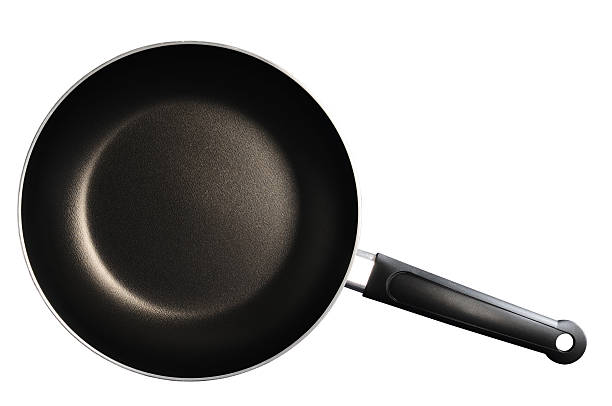
Are Non Stick Pans Safe To Use
Non-stick pans are generally safe to use when used and maintained correctly. However, concerns about the safety of non-stick coatings, such as PTFE and PFOA, have led to questions regarding potential health risks.
Understanding proper usage, choosing quality products, and staying informed about recent advancements can help you enjoy the convenience of non-stick pans without compromising safety.
Understanding Non-Stick Coatings
Non-stick pans typically feature coatings such as PTFE (polytetrafluoroethylene) or ceramic. While PTFE is generally safe at low to moderate temperatures, overheating can lead to the release of fumes, posing potential health risks. Ceramic coatings, on the other hand, are considered safer and more environmentally friendly.
Health Considerations
Health-conscious individuals often express concerns about perfluorooctanoic acid (PFOA), a chemical used in the production of some non-stick coatings. PFOA has been associated with health issues, and while many manufacturers have phased it out, consumers should check product labels for PFOA-free options.
Proper Usage and Maintenance
Ensuring the safety of non-stick pans involves using them within recommended temperature ranges and avoiding the use of metal utensils that may damage the coating. Regularly inspecting pans for signs of wear and tear and replacing them when necessary can contribute to a safer cooking experience.
Making Informed Choices
To enhance safety, opt for reputable brands that prioritize quality and adhere to safety standards. Keep abreast of advancements in non-stick technology, such as the development of newer, safer coatings, to make well-informed decisions about the non-stick pans you use in your kitchen.
Non-Stick Pans In A Nutshell
Non-stick pans offer convenient cooking experiences, appreciated for their easy cleanup and reduced need for excessive fats or oils. Concerns about safety often revolve around past issues with PFOA, but modern non-stick pans are typically PFOA-free.
The primary non-stick coating, PTFE, is known for its inert nature, though debates exist about potential fumes at high temperatures. Responsible use, avoiding overheating, and using gentle utensils can enhance the safety and longevity of non-stick pans.
In essence, while considering safety aspects, these pans remain a popular choice for many kitchens, striking a balance between convenience and cautious cooking practices.
The Sticky History Of Non-Stick Pans
The history of non-stick pans unveils a fascinating journey marked by innovation and evolving safety standards. Early experiments with non-stick coatings led to the use of perfluorooctanoic acid (PFOA), raising concerns about its potential health effects.
However, advancements in technology have ushered in PFOA-free alternatives, with polytetrafluoroethylene (PTFE) emerging as the dominant coating. Despite their widespread use, non-stick pans occasionally face scrutiny for the release of fumes at high temperatures.
It’s crucial to acknowledge that responsible cooking practices, such as avoiding overheating and using utensils that won’t damage the coating, play a pivotal role in ensuring the safety of non-stick pans.
In essence, the sticky history of non-stick pans reflects a continuous effort to balance convenience with evolving safety standards in the culinary world.
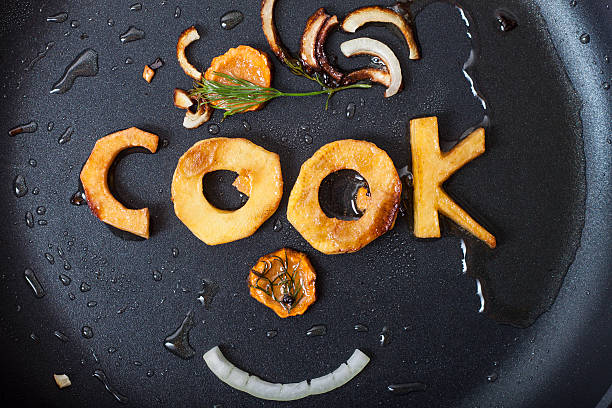
Popularity
The popularity of non-stick pans is undeniable, driven by their widespread use in kitchens around the world. These pans have become a staple for many households due to the convenience they offer in cooking and cleaning.
The ease of food release without excessive oil or butter has contributed to their popularity among both amateur cooks and seasoned chefs.
Despite occasional concerns about safety, advancements like PFOA-free coatings and responsible cooking practices have helped maintain and even enhance their popularity.
Non-stick pans remain a go-to choice for those seeking a hassle-free and efficient cooking experience, showcasing their enduring appeal in the culinary landscape.
Issues
Non-stick pans, while popular, are not without their share of issues. One primary concern revolves around the historical use of perfluorooctanoic acid (PFOA), a chemical linked to health risks.
However, contemporary non-stick pans have largely addressed this by adopting PFOA-free alternatives, such as polytetrafluoroethylene (PTFE).
Another issue often debated is the potential release of toxic fumes at high temperatures, prompting calls for cautious cooking practices. The durability of the non-stick coating can be a point of contention, with some users experiencing wear and tear over time.
It’s crucial for consumers to be aware of these issues and adopt responsible usage and maintenance practices to maximize the longevity and safety of non-stick pans.
How Safe Are Teflon Non-Stick Pans
Teflon non-stick pans, which use polytetrafluoroethylene (PTFE) as the primary coating, are generally considered safe when used correctly. Teflon itself is inert and stable, and the PTFE coating is designed to resist chemical breakdown at typical cooking temperatures.
However, concerns arise when pans are subjected to high heat, as this can lead to the release of fumes that may be harmful to both humans and pets.
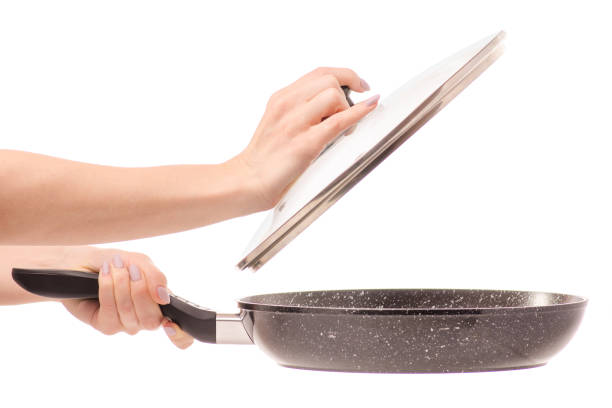
To enhance safety
Avoid Overheating: Teflon pans should not be heated above 500°F (260°C). Beyond this point, the coating may start to break down, potentially releasing toxic fumes.
Use Gentle Utensils: Sharp or abrasive utensils can damage the non-stick coating, posing durability and safety issues. Opt for wooden or silicone utensils to prolong the life of the pan.
Ventilation is Key: When cooking with Teflon pans, ensure good ventilation in the kitchen to disperse any potential fumes.
Choose Quality Products: Investing in high-quality, reputable brands can ensure the manufacturing standards adhere to safety regulations.
While Teflon non-stick pans are generally safe for everyday use, responsible cooking practices are crucial to mitigate any potential risks associated with overheating or misuse.
PFOA
Perfluorooctanoic acid (PFOA) is a synthetic chemical that was historically used in the production of certain types of non-stick coatings, including those found in cookware such as Teflon.
PFOA belongs to a group of human-made chemicals known as per- and polyfluoroalkyl substances (PFAS). It was utilized to aid in the manufacturing process and provide the non-stick properties associated with these coatings.
However, PFOA raised environmental and health concerns due to its persistence in the environment and potential links to adverse health effects.
Over time, regulatory actions and industry efforts led to a significant reduction in the use of PFOA. Many reputable non-stick cookware manufacturers have phased out PFOA from their products.
It’s important for consumers to look for PFOA-free labels when purchasing non-stick cookware to ensure that the products adhere to modern safety standards.
This shift towards PFOA-free alternatives, such as polytetrafluoroethylene (PTFE), has contributed to addressing some of the concerns associated with the use of non-stick pans. Responsible use and proper care further enhance the safety of these kitchen tools.
Overheating
Overheating non-stick pans, particularly those with Teflon coatings, can pose potential risks. The recommended safe operating temperature for these pans is typically below 500°F (260°C).
Beyond this point, the non-stick coating, especially if it contains polytetrafluoroethylene (PTFE), may begin to break down and emit fumes.
The risks associated with overheating include the release of toxic fumes, such as perfluorinated compounds, which can have adverse health effects. These fumes are a result of the breakdown of the non-stick coating under high temperatures.
To mitigate these risks and ensure safe usage:
- Monitor Temperature: Avoid exceeding the recommended temperature limit for non-stick pans. High heat cooking methods, such as searing or broiling, may be better suited for cookware designed for such purposes.
- Ventilation: Ensure good ventilation in the kitchen when using non-stick pans, especially when cooking at high temperatures. This helps disperse any potential fumes.
- Use Moderate Heat: Opt for low to medium heat settings when cooking with non-stick pans. This is generally sufficient for most cooking tasks and reduces the likelihood of overheating.
- Follow Manufacturer’s Guidelines: Adhere to the manufacturer’s instructions and guidelines for the specific non-stick pan you are using. Different brands and models may have varying temperature limits.
How To Take Care Of Your Non-Stick Pans
Proper care is essential to maintain the longevity and effectiveness of non-stick pans. Follow these guidelines to ensure the optimal performance of your non-stick cookware:
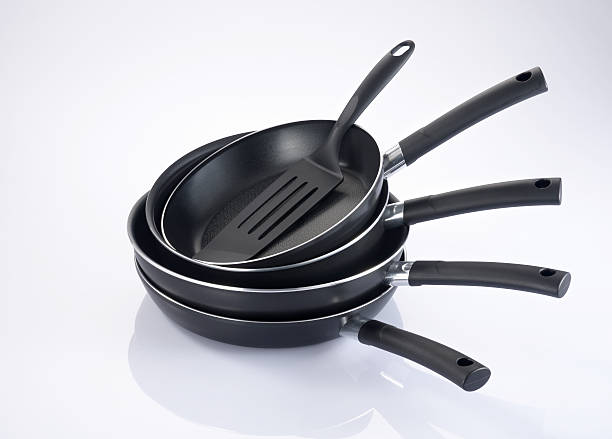
Always Monitor The Temperature
Monitoring the temperature when using cookware, especially non-stick pans, is crucial for both optimal cooking results and safety.
Non-stick pans, often coated with materials like Teflon, have temperature limits to prevent the breakdown of the coating and the release of potentially harmful fumes. It’s advisable to stay within the recommended temperature range, usually below 500°F (260°C), to avoid overheating.
By using a reliable kitchen thermometer and adjusting heat settings accordingly, you can ensure that your non-stick pans perform effectively without compromising their integrity.
Consistent temperature monitoring is a simple yet effective practice to maintain the longevity of your non-stick cookware and enhance overall kitchen safety.
Avoid metal utensils
To preserve the non-stick coating on your pans, it’s essential to avoid using metal utensils during cooking and cleaning.
Metal utensils, such as spatulas or forks, can scratch and damage the non-stick surface, compromising its effectiveness over time. Opt for softer utensils made of wood, silicone, or plastic to prevent any abrasive contact with the coating.
This simple precaution not only safeguards the non-stick properties of your cookware but also ensures its longevity, allowing you to enjoy convenient and efficient cooking without worrying about potential damage to the pan’s surface.
Hand Wash Only
Maintaining the integrity of your non-stick pans requires a commitment to hand washing only. While some pans may claim to be dishwasher-safe, the harsh detergents and abrasive conditions inside dishwashers can accelerate the wear and tear of the non-stick coating.
Instead, opt for a gentle hand wash using a soft sponge or cloth with mild dish soap. This practice not only preserves the non-stick surface but also ensures a thorough yet delicate cleaning process.
By adhering to hand washing, you contribute to the longevity of your non-stick pans, allowing them to continue delivering hassle-free cooking experiences.
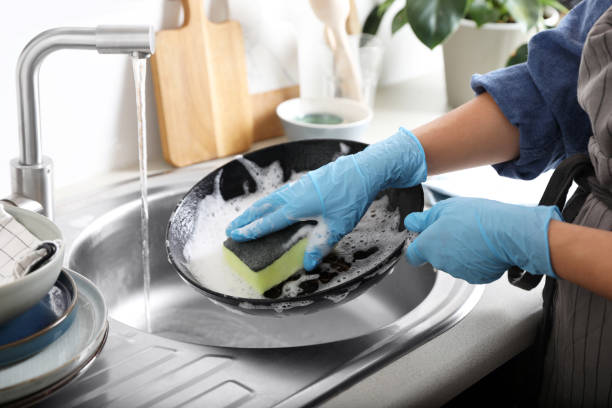
Avoid Cooking Sprays
To maintain the effectiveness of your non-stick pans, it’s advisable to steer clear of cooking sprays. While non-stick pans inherently reduce the need for excessive oils, certain cooking sprays can leave a residue that is challenging to clean and may adversely affect the non-stick properties over time.
Instead, consider using minimal amounts of oils or fats directly on the pan’s surface when necessary. This not only ensures optimal performance but also simplifies the cleaning process, contributing to the longevity of your non-stick cookware.
By avoiding cooking sprays, you can enhance the overall efficiency and lifespan of your non-stick pans.
Cool Before Cleaning
Allowing your non-stick pans to cool before cleaning is a crucial step in maintaining their longevity and performance. Rapid temperature changes, such as placing a hot pan under cold water, can stress the non-stick coating and lead to damage.
To ensure the integrity of the coating, simply let the pan cool down to room temperature before cleaning. This straightforward practice not only protects the non-stick surface but also contributes to a smoother cleaning process.
By incorporating this precaution into your cooking routine, you can maximize the lifespan of your non-stick pans and enjoy consistent, efficient cooking experiences.
Store Properly
Proper storage is key to preserving the condition of your non-stick pans. To avoid potential scratches and damage, refrain from stacking multiple pans or placing other cookware inside them.
If stacking is necessary, consider using pan protectors between each pan to create a protective barrier. Additionally, store your non-stick pans in a cool, dry place to prevent any moisture-related issues.
By taking these simple steps, you ensure that your non-stick pans remain in optimal condition, ready to deliver efficient and enjoyable cooking experiences whenever you need them.
Regular Inspection
Regularly inspecting your non-stick pans is a prudent practice to ensure their ongoing performance and safety. Periodically check for any signs of wear and tear on the non-stick coating, such as scratches, peeling, or discoloration.
If you notice any issues, it may be time to replace the pan to maintain optimal cooking results and safety standards. By conducting routine inspections, you stay proactive in addressing potential concerns and contribute to the longevity of your non-stick cookware.
This simple habit ensures that your pans remain reliable and continue to enhance your culinary endeavors.
Follow Manufacturer’s Guidelines
Adhering to the manufacturer’s guidelines is essential for the proper care and maintenance of your non-stick pans. Each brand may have specific instructions regarding recommended cooking temperatures, cleaning methods, and overall care.
Pay attention to any guidance provided on the packaging or in the accompanying manual. Following these guidelines ensures that you are using the non-stick pans in a way that aligns with the manufacturer’s intended design, promoting longevity and optimal performance.
By respecting these recommendations, you can enjoy the convenience of non-stick cookware while safeguarding its functionality and safety features.
Alternatives To The Teflon Non-Stick Pan
For those seeking alternatives to Teflon non-stick pans, several options offer diverse cooking experiences without the use of polytetrafluoroethylene (PTFE).
Ceramic Coated Pans
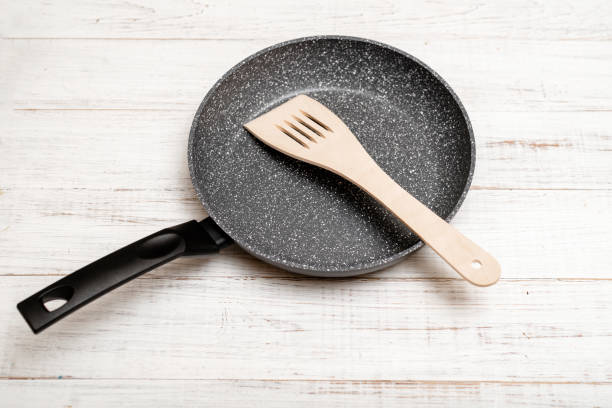
Ceramic coated pans have emerged as a popular alternative to traditional Teflon non-stick pans, offering a safe and effective cooking experience.
These pans feature a ceramic layer applied to the cooking surface, providing a smooth, non-stick finish without the use of polytetrafluoroethylene (PTFE) or perfluorooctanoic acid (PFOA).
Ceramic coated pans are known for their even heat distribution, quick heating capabilities, and resistance to scratches. They are also appreciated for being free from potentially harmful chemicals, making them a health-conscious choice.
However, it’s important to note that ceramic coatings can be more delicate than traditional non-stick surfaces, so using soft utensils and following care instructions is crucial to maintaining their effectiveness and longevity.
Cast Iron Skillets
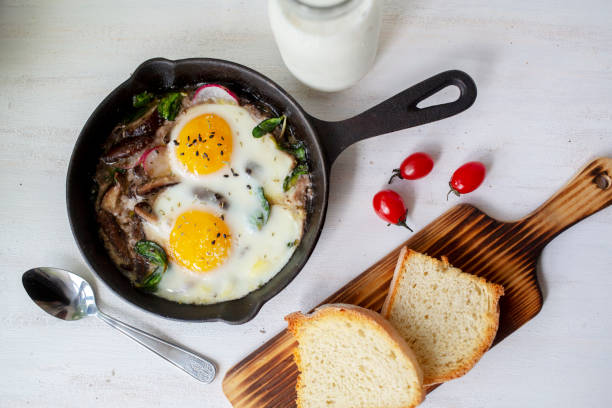
Cast iron skillets stand out as a timeless and reliable alternative to Teflon non-stick pans. These skillets are renowned for their exceptional heat retention and even heating properties.
Over time, with proper seasoning and use, cast iron develops a natural non-stick surface, eliminating the need for chemical coatings like polytetrafluoroethylene (PTFE). This makes cast iron skillets a healthier option for cooking.
Their versatility allows for use on stovetops, ovens, or even open flames, making them a favorite among culinary enthusiasts. While they require regular seasoning and specific care to prevent rusting, cast iron skillets are durable, long-lasting, and provide a unique, rustic charm to the kitchen.
Stainless Steel Pans
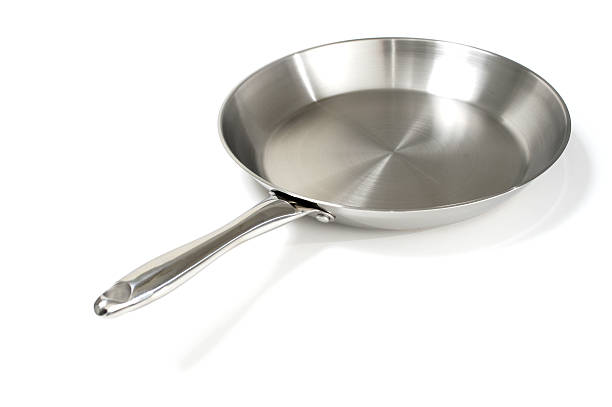
Stainless steel pans offer a durable and versatile alternative to Teflon non-stick pans. While inherently not non-stick, stainless steel pans excel in even heat distribution and are resistant to scratches and dents.
These pans are ideal for various cooking techniques, allowing for searing, browning, and deglazing. To prevent sticking, using oils or fats during cooking is recommended.
Stainless steel is a healthy and non-reactive material, ensuring that no harmful substances leach into your food.
While they may require a bit more attention to avoid sticking, stainless steel pans are favored for their durability, sleek appearance, and suitability for a wide range of culinary applications.
Carbon Steel Pans
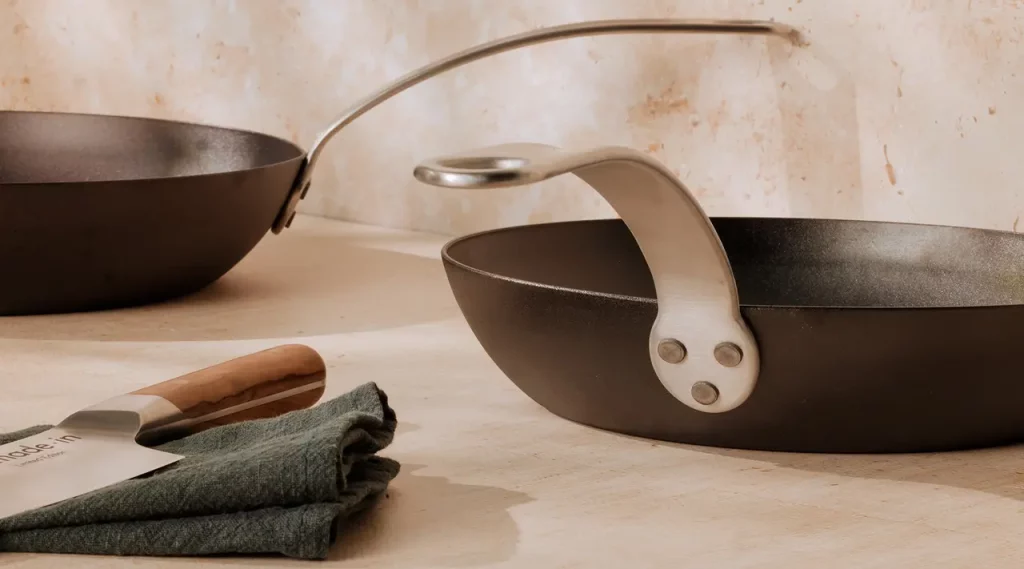
Carbon steel pans have gained popularity as a versatile and efficient alternative to Teflon non-stick pans. Similar to cast iron, carbon steel pans develop a natural non-stick surface over time through a process called seasoning.
They are known for their quick and even heating properties, making them suitable for various cooking techniques, from sautéing to frying. Carbon steel pans are lighter than cast iron, making them easier to handle, and they respond rapidly to changes in temperature.
To maintain their non-stick properties, regular seasoning and proper care are essential. Carbon steel pans are appreciated for their durability, high heat tolerance, and the ability to withstand intense cooking conditions.
While they may require a bit more maintenance, many chefs appreciate the performance and versatility that carbon steel pans bring to the kitchen.
FAQs
Are non-stick pans safe for everyday cooking?
Absolutely! Non-stick pans, when used according to manufacturer guidelines, are perfectly safe for everyday cooking. They provide a convenient and efficient way to prepare your favorite meals without the worry of sticking.
Do non-stick pans release harmful chemicals into food?
No need to worry! High-quality non-stick pans are designed with materials that are safe for cooking. They are typically coated with PTFE or ceramic, which are stable and safe when used at appropriate temperatures. Just follow the recommended usage instructions.
Can I use non-stick pans without oil or butter?
Certainly! One of the fantastic features of non-stick pans is their ability to reduce the need for excessive oils or fats. You can cook with minimal oil, making your meals healthier without sacrificing taste or quality.
Are non-stick pans easy to clean?
Absolutely! Cleaning non-stick pans is a breeze. Their smooth surfaces make it difficult for food to stick, and most of them are dishwasher safe. Enjoy the convenience of quick and easy cleanup after each delicious meal.
Do non-stick pans scratch easily?
Not at all! If you use the right utensils, such as silicone or wooden, non-stick pans can maintain their smooth surface for a long time. Avoiding metal utensils ensures the longevity of your non-stick cookware.
Are there health benefits to using non-stick pans?
Yes, indeed! By reducing the need for excessive cooking oils, non-stick pans contribute to a healthier cooking style. They enable you to enjoy your favorite dishes with less added fats, promoting a balanced and nutritious diet.
Can I use non-stick pans on high heat?
Many non-stick pans are designed to handle moderate to high heat. However, it’s crucial to follow the manufacturer’s guidelines regarding heat levels. Using non-stick pans within the recommended temperature range ensures their longevity and your safety.
Are non-stick pans suitable for all types of cooktops?
Absolutely versatile! Non-stick pans are compatible with various cooktops, including gas, electric, and induction. Check the product specifications to ensure compatibility with your specific cooktop.
Are there any eco-friendly options for non-stick pans?
Certainly! Some non-stick pans are made with environmentally friendly materials. Look for pans that are PFOA-free or those with ceramic coatings, as they are considered more eco-friendly alternatives.
Do non-stick pans affect the flavor of food?
Not at all! Non-stick pans preserve the natural flavors of your ingredients without imparting any unwanted tastes. Enjoy the pure, delicious essence of your meals when using high-quality non-stick cookware.
Conclusion
In conclusion, the safety of non-stick pans depends on various factors, including the type of non-stick coating, cooking temperatures, and proper usage.
While traditional non-stick coatings like PTFE may release potentially harmful fumes at high temperatures, newer alternatives like ceramic coatings offer a safer option. It is crucial for users to follow manufacturer guidelines, avoid overheating, and use utensils that won’t damage the coating.
Additionally, choosing high-quality non-stick pans from reputable brands can contribute to a safer cooking experience. Ultimately, with proper care and informed use, non-stick pans can be a convenient and safe choice in the kitchen.
As with any cooking utensil, understanding the product’s features and limitations is essential for ensuring both efficiency and safety in the kitchen.